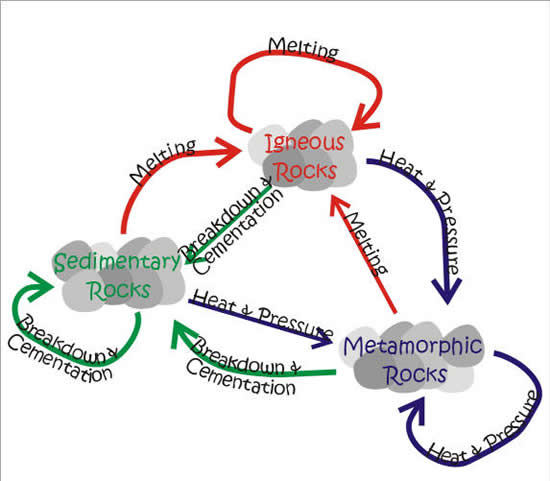-Stage 1.3-
Rock Basics
Now that minerals are a little clearer (hopefully) we can move on to rocks. Rocks have a lot more basic purposes than minerals including cement, building materials, decorative materials and of course, paperweights. The way you identify minerals is by certain mineral properties, like cleavage and hardness. Identifying a rock is a lot different. It is not really harder or easier, just different. Lets start of this page with the basic definition of a rock, then go into some rock basics. From here we will move on to the three main types of rocks; igneous, sedimentary, and metamorphic.
Definition of a Rock - A relatively hard, naturally occurring mineral material. Rock can consist of a single mineral or of several minerals that are either tightly compacted or held together by a cement-like mineral matrix. (dictionary.com). Essentially a rock is a mineral or a bunch of minerals mashed into one lump and distorted from the pure mineral state.
Rock Breakdown
There are 3 main types of rocks. Click on the links below to go to their respective websites.
Rocks formed from the solidification of liquid rock, also known as magma or lava.
Rocks formed from the breakdown of others rocks and the cementation of those particles from other rocks and animals.
Rocks formed from the alteration of any other rock (including other metamorphic rocks) due to increased heat and pressure.
The Rock Cycle


